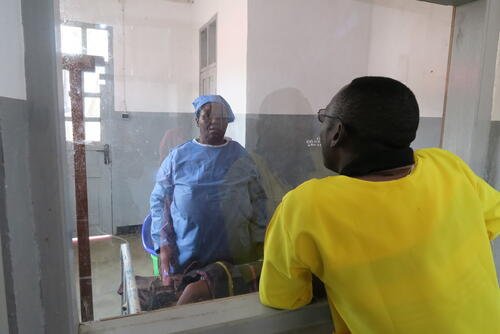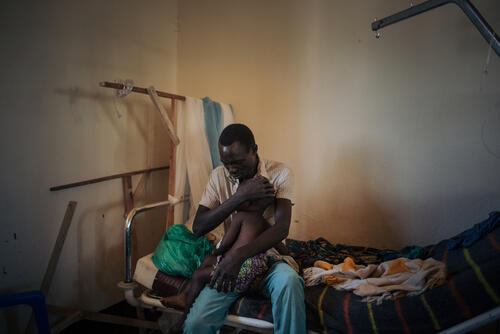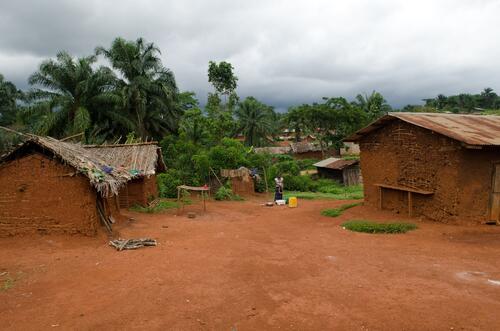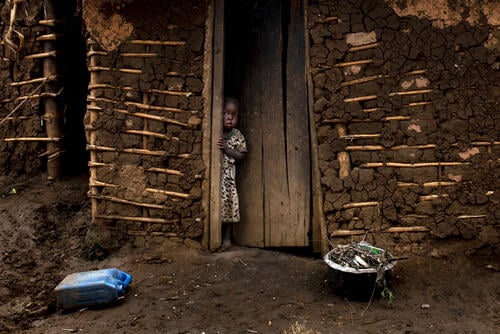MSF director of operations Dr Isabelle Defourny answers three questions on what’s currently happening and what needs to happen next in the Ebola outbreak in North Kivu and Ituri provinces in northeastern Democratic Republic of Congo.
What’s happening with the response to the Ebola epidemic in DRC?
The Ebola epidemic in east Democratic Republic of Congo is still not contained. More than 1,600 deaths from the Ebola virus have been reported since the outbreak was first declared on August 1, 2018 and, during the first seven months of the epidemic (August 2018 to March 2019), over 1,000 confirmed and probable cases were declared.
Between March and June 2019, this number doubled, with 1,000 new cases in what’s a short period of time. The end of April was the peak, with more than 120 cases a week. There’s still a huge amount of new cases, between 75 and 100 every week. In a context like this, it’s extremely difficult to accurately track the epidemic’s chains of transmission.
During the outbreak in 2014, all that could be done was to isolate patients and administer them largely ineffective drugs. With the vaccines and experimental drugs available to us in 2019, we’re now able to offer people the chance to protect themselves individually as well as access to promising treatments.
Other vaccines do exist. They should be tested in an epidemic environment to be prepared, should this one spread and to be able to dispose of a wider range of vaccines in the event of future outbreaks.Dr Isabelle Defourny, MSF Director of Operations
According to the information provided after the epidemic broke out, most confirmed cases’ personal contacts were vaccinated and then monitored by the Ministry of Health’s teams. This very likely helped contain the epidemic for a while. It’s the first time vaccination has been implemented on such a large scale, which is an extremely positive development.
Is this approach still possible today?
Let’s say it needs to be adapted and enhanced. Right now, “ring” vaccination is being used. This entails vaccinating anyone who’s been in contact with someone infected with Ebola, as well as all of their contacts.
The reasoning behind the method isn’t bad per se. But implementing it is time-consuming and challenging (problems with identifying each and every person’s individual contacts) and it’s not adapted to the insecurity affecting North Kivu.
In addition, the number of people vaccinated is too small to contain the spread of the epidemic. The teams also have issues transporting from Kinshasa vaccines that must be stored at a constant temperature of -60°C.
With around just 50 contacts of one confirmed case vaccinated, it’s likely that only one-quarter to one-third of those at risk are protected.Dr Isabelle Defourny, MSF Director of Operations

A change of strategy is therefore necessary to contain the epidemic?
Absolutely. In fact, in May, the SAGE [Strategic Advisory Group of Experts on Immunization at the World Health Organization] group of experts recommended modifying the vaccination strategy in DRC so that more people can be vaccinated.
Until now, the main obstacle to implementing extended vaccination has been the small stock of Ebola vaccine from manufacturer Merck — the only one shown to be effective in an epidemic.
According to WHO’s latest information, 600,drc000 Merck vaccine doses are now available. If this is the case, there’s no longer any good reason for us not to step up vaccination immediately.
People in DRC understand the usefulness of vaccination and, in fact, are asking to be immunised. However, with around just 50 contacts of one confirmed case vaccinated, it’s likely that only one-quarter to one-third of those at risk are protected.
DRC’s stock of vaccines is extremely low, usually less than 1,000 doses. With its supply only sporadic, and issues with contact tracing, we’re not yet able to say this is an emergency response strategy.
While some people anticipate a rapid end to the epidemic, we see no signs to back up such predictions. Quite the contrary, as there have been alerts only recently in Uganda and near the border with South Sudan.
Other vaccines do exist. They should be tested in an epidemic environment to be prepared, should this one spread and to be able to dispose of a wider range of vaccines in the event of future outbreaks.






